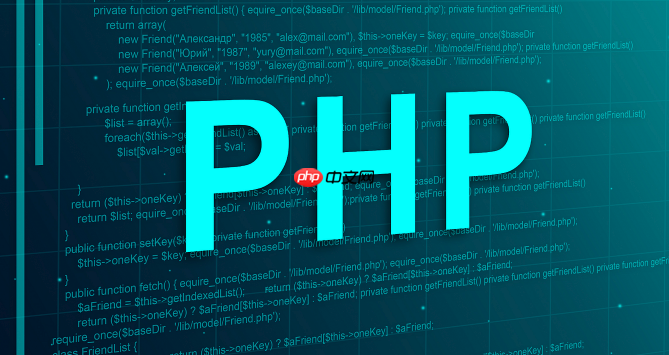Use WebRTC with PHP backend for peer-to-peer audio, where PHP handles signaling via WebSocket and JavaScript manages media capture and RTCPeerConnection.

To implement voice chat functionality in a web application using PHP, you need to integrate real-time audio transmission with server-side handling. Here are several methods to achieve this:
The operating environment of this tutorial: Dell XPS 15, Windows 11
1. Use WebRTC with PHP Backend
WebRTC enables peer-to-peer audio communication directly in browsers, while PHP acts as a signaling server to exchange connection metadata.
- Set up a signaling server using PHP and WebSocket (e.g., Ratchet for PHP) to handle session negotiation.
- Use JavaScript on the client side to access the microphone via navigator.mediaDevices.getUserMedia().
- Establish direct audio streaming between users using RTCPeerConnection.
- Store user session data and room information on the server using PHP sessions or a database.
2. Integrate a Third-Party Voice API
Leverage cloud communication platforms like Agora, Twilio, or EnableX that provide voice SDKs and allow PHP to manage tokens and user authentication.
立即学习“PHP免费学习笔记(深入)”;
- Register an account with a voice service provider and obtain API keys.
- Use cURL in PHP to request temporary access tokens from the provider’s API.
- Pass the token and channel information to the frontend where the SDK initializes the voice call.
- Use PHP to log call events or manage user permissions via the provider's REST API.
3. Record and Stream Audio via PHP
This method allows users to record short voice messages through the browser and send them to the server for storage and redistribution.
- Capture audio using MediaRecorder API in JavaScript and send blobs to a PHP script via AJAX.
- Save uploaded audio files in a designated directory using move_uploaded_file() in PHP.
- Validate file type and size to prevent abuse.
- Allow other users to download or stream the recorded .webm or .wav files through standard HTTP responses.
4. Build a Custom Audio Relay Server
For advanced use cases, create a relay system where all audio passes through a central PHP-driven server using sockets.
- Implement a socket server in PHP using stream_socket_server() to accept raw audio streams.
- Have clients encode audio into small chunks (e.g., PCM or Opus) and send them over TCP/UDP.
- Process and rebroadcast incoming audio packets to other connected clients.
- Handle synchronization and buffering on the client side to reduce latency.
以上就是怎么用php语音聊天_PHP语音聊天功能实现方法教程的详细内容,更多请关注php中文网其它相关文章!


